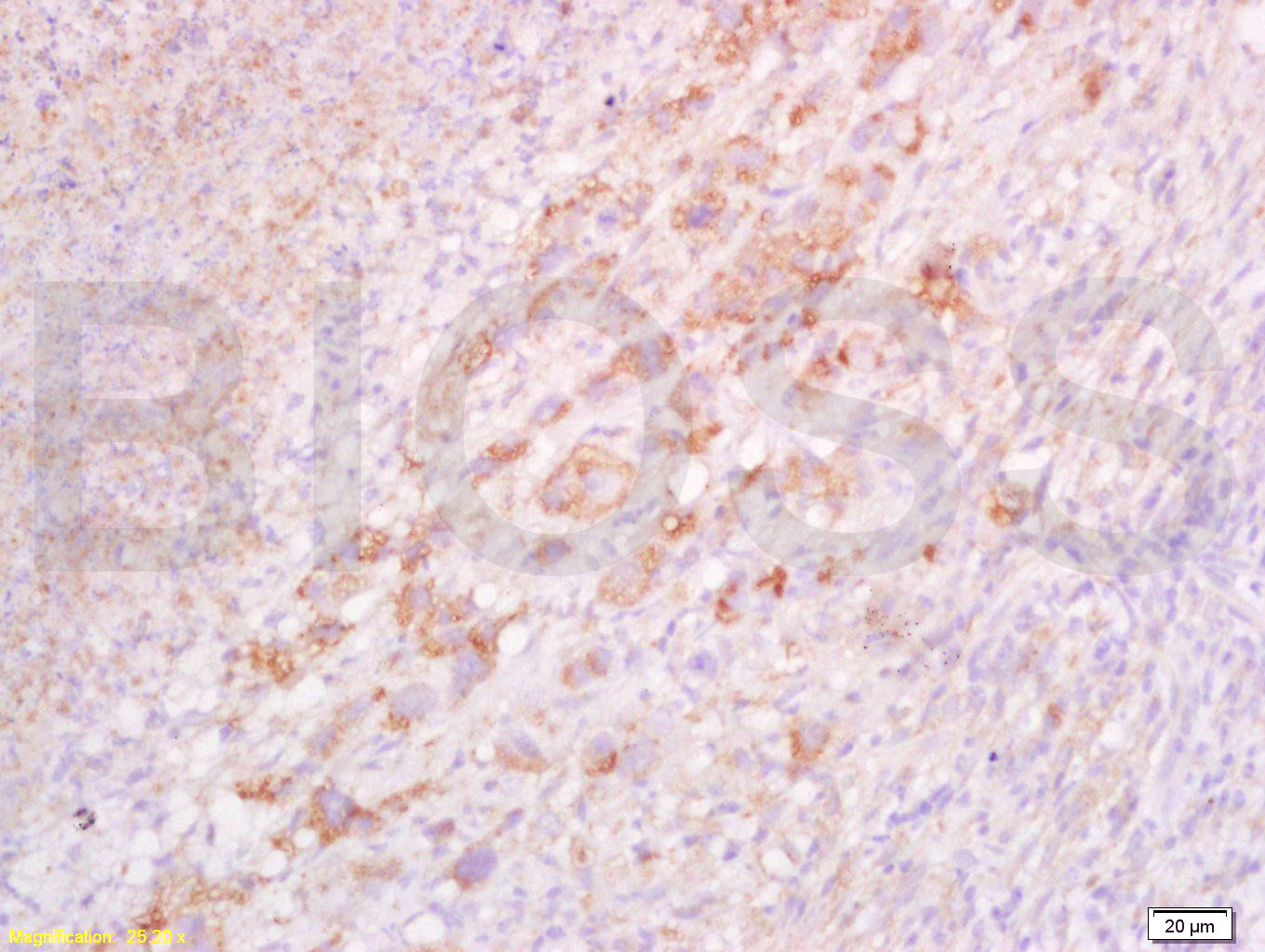
Rabbit Anti-ARRDC3 antibody
ARRDC 3; Arrestin domain containing protein 3; KIAA1376; Thioredoxin binding protein 2 like inducible membrane; TLIMP; ARRD3_HUMAN.
View History [Clear]
Details
Product Name ARRDC3 Chinese Name 抑制蛋白结构域蛋白3抗体 Alias ARRDC 3; Arrestin domain containing protein 3; KIAA1376; Thioredoxin binding protein 2 like inducible membrane; TLIMP; ARRD3_HUMAN. Research Area Cell biology immunology Immunogen Species Rabbit Clonality Polyclonal React Species Mouse, (predicted: Human, Rat, Chicken, Dog, Pig, Cow, Horse, Rabbit, ) Applications ELISA=1:5000-10000 IHC-P=1:100-500 IHC-F=1:100-500 IF=1:100-500 (Paraffin sections need antigen repair)
not yet tested in other applications.
optimal dilutions/concentrations should be determined by the end user.Theoretical molecular weight 46kDa Cellular localization cytoplasmic Form Liquid Concentration 1mg/ml immunogen KLH conjugated synthetic peptide derived from human ARRDC3: 165-270/414 Lsotype IgG Purification affinity purified by Protein A Buffer Solution 0.01M TBS(pH7.4) with 1% BSA, 0.03% Proclin300 and 50% Glycerol. Storage Shipped at 4℃. Store at -20 °C for one year. Avoid repeated freeze/thaw cycles. Attention This product as supplied is intended for research use only, not for use in human, therapeutic or diagnostic applications. PubMed PubMed Product Detail The arrestins are a family of proteins that are important for regulating signal transduction within cells. Arrestins are part of a conserved two step mechanism for regulating the activity of G-protein coupled receptors (GPCRs). In response to a stimulus, GPCRs activate a heterotrimeric G protein. In order to turn off this response, or adapt to a constant stimulus, activated receptors need to be silenced. The first step is phosphorylation by a class of serine/threonine kinases called G protein coupled receptor kinases (GRKs). This phosphorylation specifically marks the activated receptor for arrestin binding. Once arrestin is bound to the receptor it is unable to signal further. Recent research continues to expand the known actions of arrestins, which can bind to other classes of receptors and can directly activate signaling pathways on their own. Different arrestins (visual arrestin (or Arrestin 1), beta-arrestin 1 (or Arrestin 2) and beta-arrestin 2 (or Arrestin 3) can reduce the activity of their target GPCRs in several different ways.
Subunit:
Does not bind TXN (thioredoxin).
Subcellular Location:
Cytoplasm.
Tissue Specificity:
Highly expressed in skeletal muscle, placenta, kidney, adrenal gland, lymph node, mammary gland, thyroid, and trachea. Very low levels in colon, thymus, spleen, small intestine, bladder and bone marrow. Strong expression in differentiated adipocytes compared to preadipocytes.
Similarity:
Belongs to the arrestin family.
SWISS:
Q96B67
Gene ID:
57561
Database links:
UniProtKB/Swiss-Prot: Q96B67.1
Product Picture
Antigen retrieval: citrate buffer ( 0.01M, pH 6.0 ), Boiling bathing for 15min; Block endogenous peroxidase by 3% Hydrogen peroxide for 30min; Blocking buffer (normal goat serum,C-0005) at 37℃ for 20 min;
Incubation: Anti-ARRDC3 Polyclonal Antibody, Unconjugated(SL8077R) 1:200, overnight at 4°C, followed by conjugation to the secondary antibody(SP-0023) and DAB(C-0010) staining
Bought notes(bought amounts latest0)
No one bought this product
User Comment(Total0User Comment Num)
- No comment



 +86 571 56623320
+86 571 56623320




